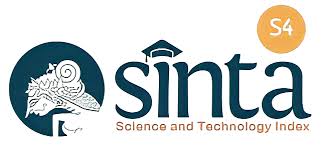Ragam Penggunaan Bahasa dalam Rapat dan Arisan Karang Taruna AMOEBA di Yogyakarta: Perspektif Sosiopragmatik
DOI:
https://doi.org/10.37680/lingua_franca.v1i2.1612Keywords:
AMOEBA, Analysis, Language Use, MeetingsAbstract
This study aims to analyze the variation of language used in AMOEBA (Bajang Youth and Youth Generation) meetings and social gatherings in Pandak, Bantul, and Yogyakarta. The method used in this research is a descriptive qualitative method. The data was obtained from the recordings made at the wedding ceremony of a community in Bantul Regency. According to Scarlet, the speech act analysis in this study is based on the speech act theory. This research produces written data. The results of the study show that the use of language found in the AMOEBA hamlets of Daleman, Gilangharjo, Pandak, and Bantul are as follows; (1) Switching external codes from Javanese to Indonesian; (2) switching extercodescode from Arabic to Indonesian; (3) internal code-switching from Javanese ngoko to Javanese krama; (4) mix code into; (5) mix the code out; (6) and speech acts which are dominated by the presence of illocutionary speech acts, in the form of expressive speech acts and directive speech acts. Based on the sociopragmatic analysis, the use of the language is strongly influenced by the social conditions of the speaking community, both age, kinship, and the same language, because they live in the same area
Downloads
Published
How to Cite
Issue
Section
License
Lingua Franca: Jurnal Bahasa dan Sastraallow the author(s) to hold the copyright without restrictions and allow the author(s) to retain publishing rights without restrictions, also the owner of the commercial rights to the article is the author.
License:
- Attribution: You must provide an appropriate name, include a link to the license, and certify that changes have been made. You can do this in an appropriate manner, but do not imply that the licensor supports you or your use.
- Share Alike: If you compose or make derivatives of these materials, you must distribute your contributions under the same license as the original materials.
- No additional restrictions: You may not use legal provisions or technological means of control that legally restrict others from doing the things this license allows.
You are free to:
- Share, copy, and redistribute this material in any form or format.
- Adapt, modify, and create derivatives of this material for any purpose, including commercial purposes.
- The licensor cannot revoke the above terms as long as you comply with the terms of this license.
Creative Commons Attribution-ShareAlike 4.0 International License (CC BY-SA 4.0).



